Woohyeon Shim
Rebooting ACGAN: Auxiliary Classifier GANs with Stable Training
Nov 01, 2021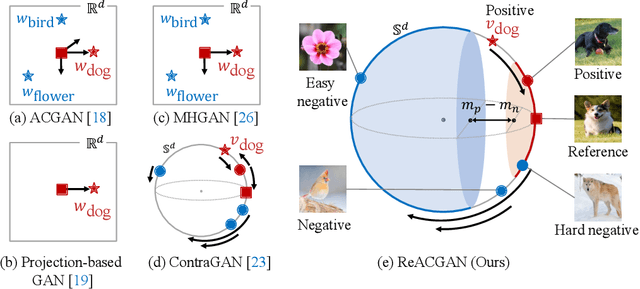
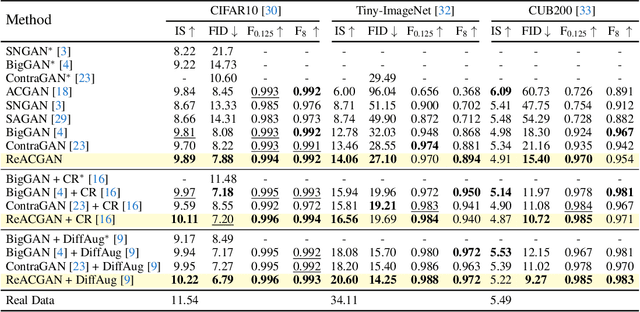

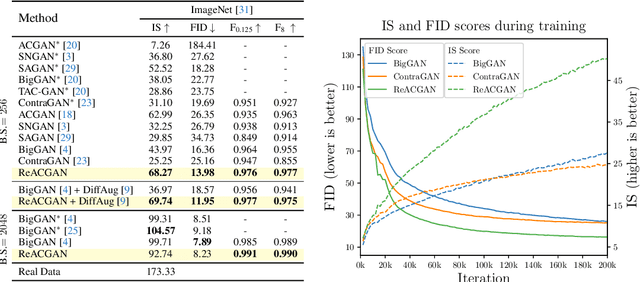
Abstract:Conditional Generative Adversarial Networks (cGAN) generate realistic images by incorporating class information into GAN. While one of the most popular cGANs is an auxiliary classifier GAN with softmax cross-entropy loss (ACGAN), it is widely known that training ACGAN is challenging as the number of classes in the dataset increases. ACGAN also tends to generate easily classifiable samples with a lack of diversity. In this paper, we introduce two cures for ACGAN. First, we identify that gradient exploding in the classifier can cause an undesirable collapse in early training, and projecting input vectors onto a unit hypersphere can resolve the problem. Second, we propose the Data-to-Data Cross-Entropy loss (D2D-CE) to exploit relational information in the class-labeled dataset. On this foundation, we propose the Rebooted Auxiliary Classifier Generative Adversarial Network (ReACGAN). The experimental results show that ReACGAN achieves state-of-the-art generation results on CIFAR10, Tiny-ImageNet, CUB200, and ImageNet datasets. We also verify that ReACGAN benefits from differentiable augmentations and that D2D-CE harmonizes with StyleGAN2 architecture. Model weights and a software package that provides implementations of representative cGANs and all experiments in our paper are available at https://github.com/POSTECH-CVLab/PyTorch-StudioGAN.
Learning to Discover Reflection Symmetry via Polar Matching Convolution
Sep 03, 2021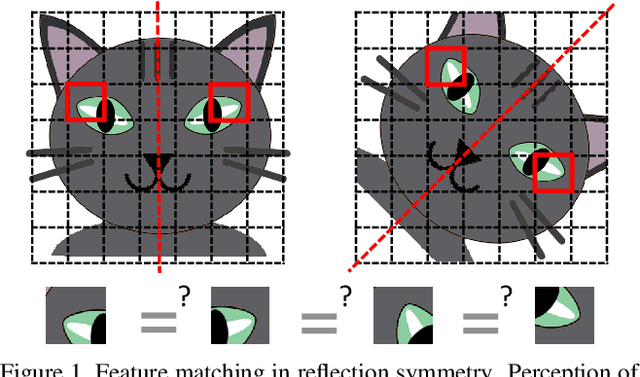
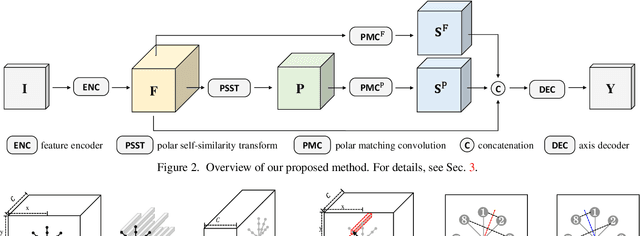
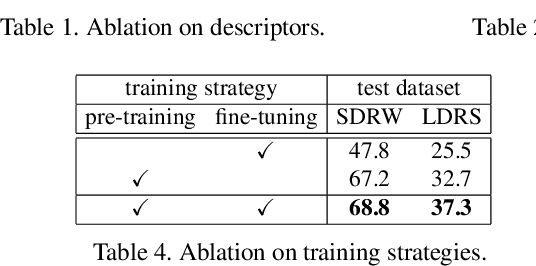
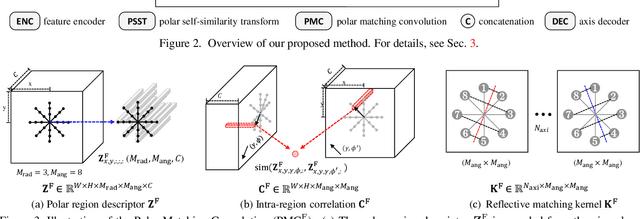
Abstract:The task of reflection symmetry detection remains challenging due to significant variations and ambiguities of symmetry patterns in the wild. Furthermore, since the local regions are required to match in reflection for detecting a symmetry pattern, it is hard for standard convolutional networks, which are not equivariant to rotation and reflection, to learn the task. To address the issue, we introduce a new convolutional technique, dubbed the polar matching convolution, which leverages a polar feature pooling, a self-similarity encoding, and a systematic kernel design for axes of different angles. The proposed high-dimensional kernel convolution network effectively learns to discover symmetry patterns from real-world images, overcoming the limitations of standard convolution. In addition, we present a new dataset and introduce a self-supervised learning strategy by augmenting the dataset with synthesizing images. Experiments demonstrate that our method outperforms state-of-the-art methods in terms of accuracy and robustness.
CircleGAN: Generative Adversarial Learning across Spherical Circles
Nov 25, 2020

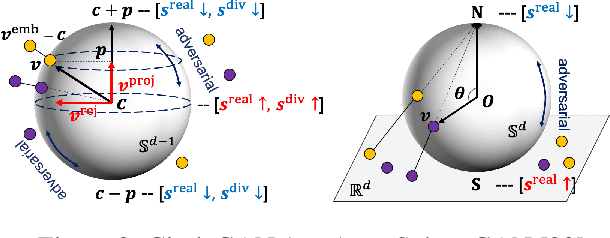

Abstract:We present a novel discriminator for GANs that improves realness and diversity of generated samples by learning a structured hypersphere embedding space using spherical circles. The proposed discriminator learns to populate realistic samples around the longest spherical circle, i.e., a great circle, while pushing unrealistic samples toward the poles perpendicular to the great circle. Since longer circles occupy larger area on the hypersphere, they encourage more diversity in representation learning, and vice versa. Discriminating samples based on their corresponding spherical circles can thus naturally induce diversity to generated samples. We also extend the proposed method for conditional settings with class labels by creating a hypersphere for each category and performing class-wise discrimination and update. In experiments, we validate the effectiveness for both unconditional and conditional generation on standard benchmarks, achieving the state of the art.
* 16 pages, 8 figures
 Add to Chrome
Add to Chrome Add to Firefox
Add to Firefox Add to Edge
Add to Edge